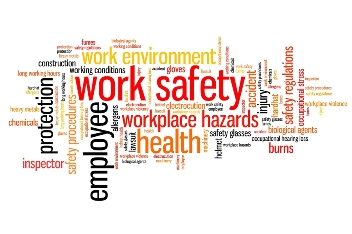 OSHA recently reported that there were about 5,190 workplace fatalities in 2017. This is almost a 7% increase over 2016. I expect that this partly reflects the higher levels of business activity and more people who are working. Still, every single number reflects a personal tragedy – the death of a worker.
OSHA recently reported that there were about 5,190 workplace fatalities in 2017. This is almost a 7% increase over 2016. I expect that this partly reflects the higher levels of business activity and more people who are working. Still, every single number reflects a personal tragedy – the death of a worker.
The causes of many of these fatalities are not addressed in much of our safety work, which is largely focused on slips, trips and falls. A lot of the events causing fatalities seem to come from very unexpected directions. These surprising events catch us quite unprepared. A key finding: All of our safety efforts over the last 5-6 years have not had much impact in reducing the number of fatalities which have been at about 4,800 per year until the jump in 2017.
Here is a three-step approach that will make a difference:
- First, open up the conversations about potential, really unusual events that could happen as we do our work. As you talk together, have toolbox or weekly safety meetings and ask yourselves to think way outside of the box and imagine what unusual events could happen that could seriously injure or kill you. (Actually these unusual events will happen at some point in the future, so we need to take them seriously.) Ideas will come from all directions as you talk together. The people actually doing the work will have good ideas about what can kill them if things go wrong. Ideas will also come up from reading safety magazines like Professional Safety. Articles in the newspapers about recent tragedies may have some important ideas. A process of brainstorming could be useful. Keep track of your conversations as ideas emerge over time and post them where everyone can see them.
- Second, talk about the things that are in place that will protect you in the event one of these fatal events does happen. What are these protections and will they really work? If the protections are not sufficient, then talk together about what needs to be put into place so that the unexpected event will not kill you. Create a synthesis of all you know and have learned so that new perspectives and preventions can be put into place. For example, as I watched the testing of my home generator, the maintenance man opened the electrical switch box in the basement to test the relays. I asked him how he protected himself from an unexpected electrical flash. He said he turned away from the panel so a flash would not hurt him. We talked about the potential for a flash and that people have been seriously burned and blinded by a flash. Just turning away was not going to help him much and I suggested that he talk with his supervisor about this and use additional protection. I also suggested some websites he could find useful. I hope he followed through.
- Third, be open to the emergence of new, unusual ideas and suggestions that come out of freely flowing conversations and the synthesis of new insights and knowledge. Some ideas may mean that you talk over each job to be sure you have thought about the unexpected. Maybe a new or different piece of protective equipment is needed. Maybe a reminder about not cutting corners on the procedures is needed. Is extra help needed? Ask yourselves questions about how to do things differently, about new ways to protect yourselves and avoid serious injuries and fatalities. There is a huge amount of information available that can be very useful so steps to better protect you can be developed and used.
These three steps are simple yet are very powerful ways to reducing the chances of a serious injury or fatality:
- Open up the conversations about the very unusual and unexpected events that could seriously injure or kill you, and keep track of your thinking.
- Think about the things that are in place that will protect you and decide if they are really sufficient. Synthesize and blend together all the ideas and other information you have into developing better ways about how you will protect yourselves in the event of a serious or unexpected event.
- As you open up the conversations, synthesizing and blending information and ideas about how to better protect yourselves, new ideas and ways to do things will emerge that will make a big difference in how you work, look out for each other and reduce the chances of a serious injury or fatality.
Your families and loved ones should expect no less from you.





